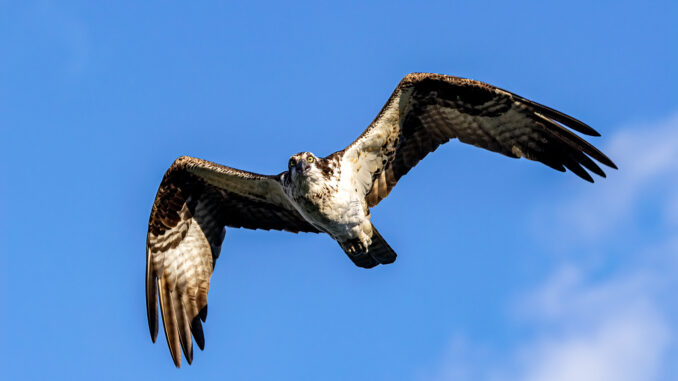
The Osprey
Sitting at the edge of the nest the young Osprey was calling out in a begging call trying to be fed. His high-pitched screams echo across the lake and unfortunately go unanswered. His parents are not around. He is all alone and worse yet, he is hungry.
Back in June of this year a pair of adult Osprey nested on my property and produce one offspring. Usually, Osprey produce two or three young but for some reason this was the second year in a row these adult raptors produced only one chick. The number of eggs a female bird produces is based on a lot of factors. It might be her age, or her diet or overall health. Either way, only one chick was hatched. This single chick was doted on by both its parents and was fed and protected for several months over the summer. All the baby needed to do was sit in the nest and wait for his parents, mostly the father, to bring him some fish.
Osprey (Pandion haliaetus) also known as Fish Hawk or Sea Eagle are not a hawk or eagle species at all. In fact, they are not closely related to any of our other raptors. They are in a family all their own. So, they are not a hawk, and they are not an eagle. Ospreys are different from other daytime raptors in that they have toes that are all of equal length. In addition, each nail or talon is rounded rather than other raptors that are grooved. Their outer toe is also reversable and can point forward or backwards, allowing them to grasp fish with two toes on one side and two toes on the other thus making sure they hold tightly onto a slippery fish. These are just some of the big differences between Osprey and other raptors.
To read Stan’s entire story, subscribe today!
